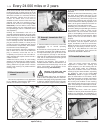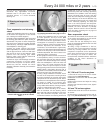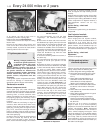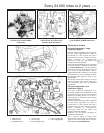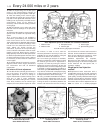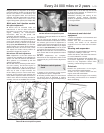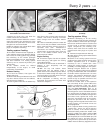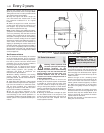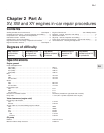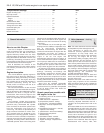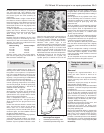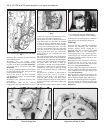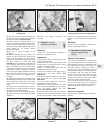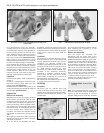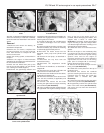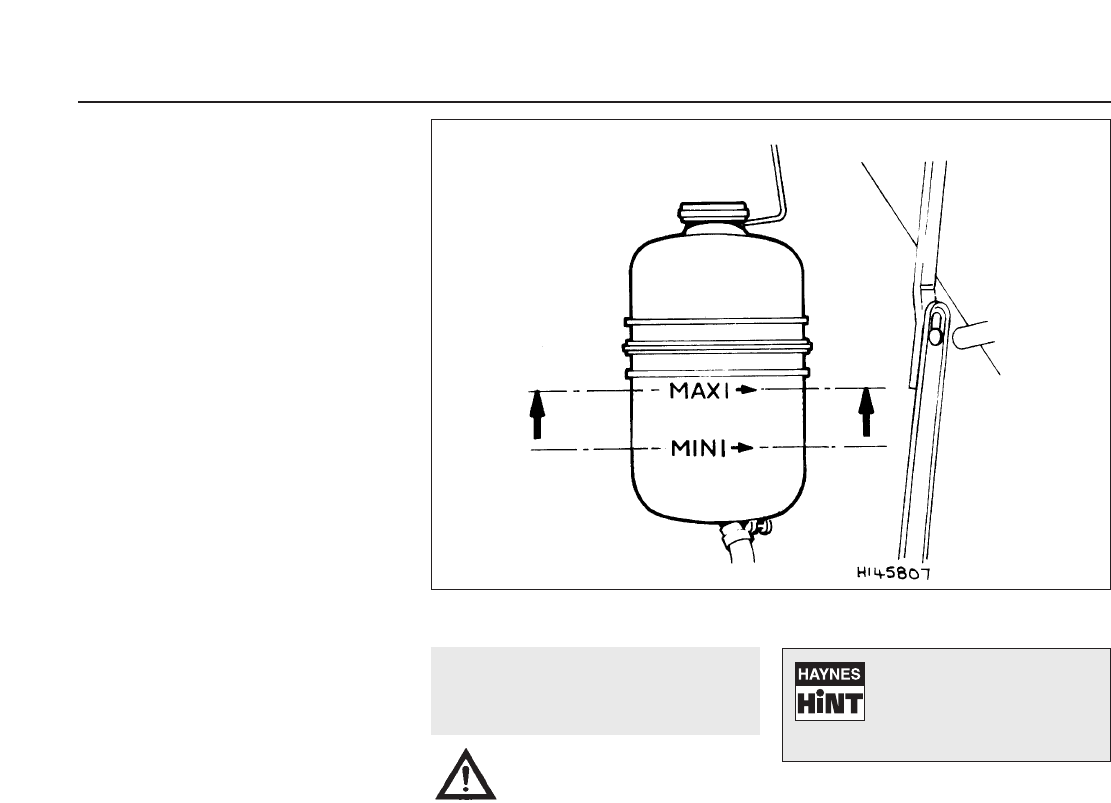
Slacken and retighten the bleed screws to
allow any air that has risen to escape. Note:
Take great care not to scald yourself with the
hot coolant during this operation.
26 Stop the engine and allow it engine to
cool, then remove the “header tank” or refit
the expansion bottle/tank to its original
location.
27 When the engine has cooled, check the
coolant level with reference to Section 3 of
this Chapter. Top-up the level if necessary,
and refit the expansion tank cap.
Note: If, after draining and refilling the system,
symptoms of overheating are found which did
not occur previously, then the fault is almost
certainly due to trapped air at some point in
the system, causing an air-lock and restricting
the flow of coolant; usually, the air is trapped
because the system was refilled too quickly. In
some cases, air-locks can be released by
tapping or squeezing the various hoses. If the
problem persists, stop the engine and allow it
to cool down completely, before unscrewing
the expansion tank filler cap, slackening the
bleed screws, or disconnecting hoses to bleed
out the trapped air.
Antifreeze mixture
28 The antifreeze should always be renewed
at the specified intervals. This is necessary
not only to maintain the antifreeze properties,
but also to prevent corrosion which would
otherwise occur as the corrosion inhibitors
become progressively less effective.
29 Always use an ethylene-glycol based
antifreeze which is suitable for use in mixed-
metal cooling systems. The quantity of
antifreeze and levels of protection are
indicated in the Specifications.
30 Before adding antifreeze, the cooling
system should be completely drained,
preferably flushed, and all hoses checked for
condition and security.
31 After filling with antifreeze, a label should
be attached to the expansion tank, stating the
type and concentration of antifreeze used,
and the date installed. Any subsequent
topping-up should be made with the same
type and concentration of antifreeze.
32 Do not use engine antifreeze in the
windscreen/tailgate washer system, as it will
cause damage to the vehicle paintwork. A
screenwash additive should be added to the
washer system in the quantities stated by the
makers.
34 Brake fluid renewal
2
Warning: Brake hydraulic fluid
can harm your eyes and damage
painted surfaces, so use
extreme caution when handling
and pouring it. Do not use fluid that has
been standing open for some time, as it
absorbs moisture from the air. Excess
moisture can cause a dangerous loss of
braking effectiveness.
1 The procedure is similar to that for the
bleeding of the hydraulic system as described
in Chapter 9, except that the brake fluid
reservoir should be emptied by siphoning,
using a clean poultry baster or similar before
starting, and allowance should be made for
the old fluid to be expelled when bleeding a
section of the circuit.
2 Working as described in Chapter 9, open
the first bleed screw in the sequence, and
pump the brake pedal gently until nearly all
the old fluid has been emptied from the
master cylinder reservoir.
3 Top-up to the “MAX” level with new fluid,
and continue pumping until only the new fluid
remains in the reservoir, and new fluid can be
seen emerging from the bleed screw. Tighten
the screw, and top the reservoir level up to the
“MAX” level line.
4 Work through all the remaining bleed
screws in the sequence until new fluid can be
seen at all of them. Be careful to keep the
master cylinder reservoir topped-up to above
the “MIN” level at all times, or air may enter
the system and greatly increase the length of
the task.
5 When the operation is complete, check that
all bleed screws are securely tightened, and
that their dust caps are refitted. Wash off all
traces of spilt fluid, and recheck the master
cylinder reservoir fluid level.
6 Check the operation of the brakes before
taking the car on the road.
1•22 Every 2 years
33.25 Where possible, lift out the expansion bottle, suspend it from the bonnet to form a
“header” tank and fill to the “MAX” mark
Old hydraulic fluid is
invariably much darker in
colour than the new, making
it easy to distinguish the two.



